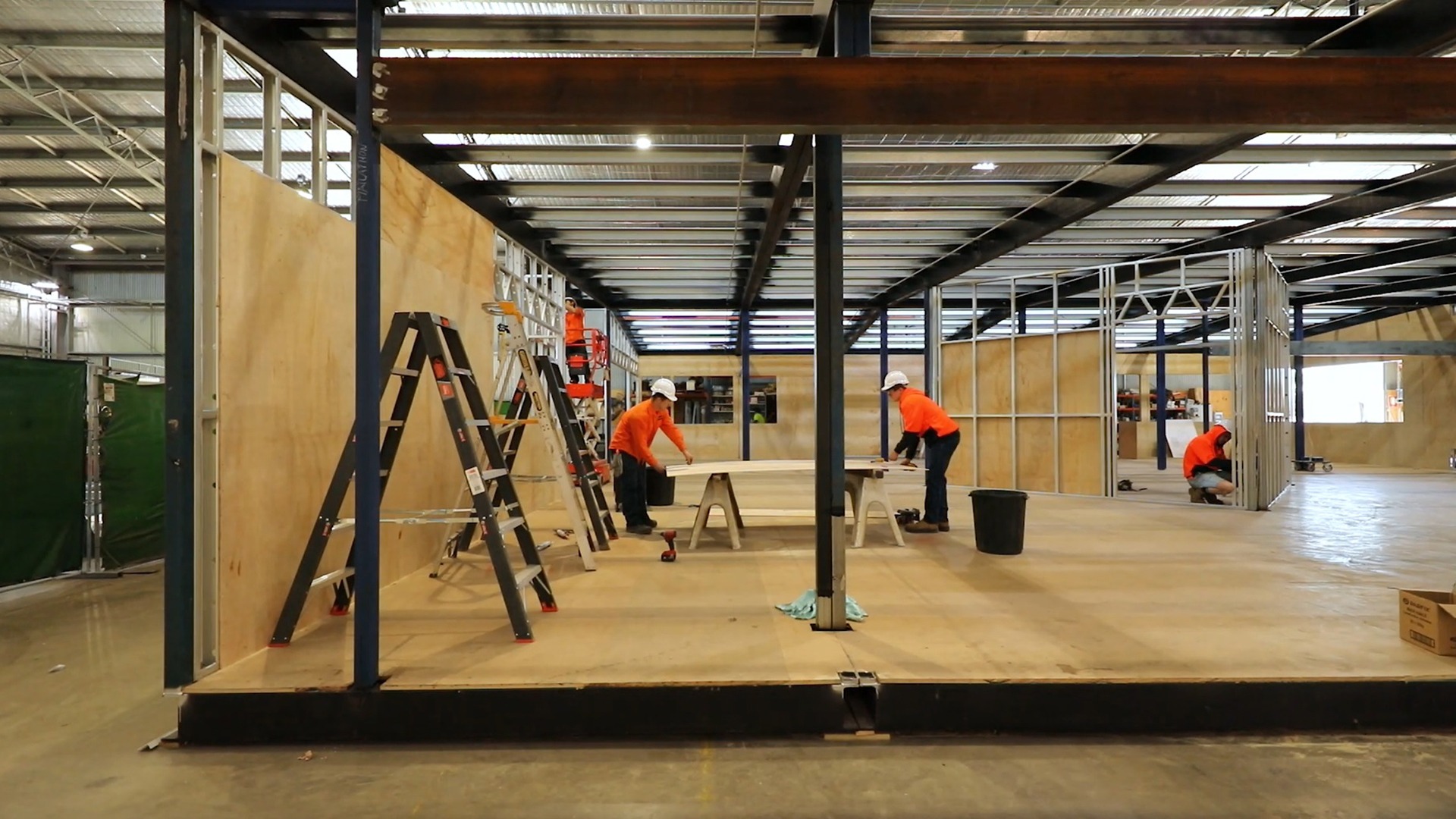Modular Hospitals & The Race To Fight Against the Covid-19 Pandemic

With the number of COVID-19 cases still continuing to fluctuate, the demand for more healthcare facilities, including hospitals, ward beds, testing laboratories and increasing bed capacity, is more immediate. Hospital campuses are often constrained sites. Therefore, any new building solution must mitigate the risk of further virus transmission to others.
Temporary generous spaces are the most flexible solution to isolate critically ill patients and give them the care they need to recover, provide hospital staff with safe, controlled environments to relieve pressures for space and offer cost-efficient solutions that can be up and running in a matter of weeks.
This article looks at how modular hospitals and healthcare facilities around Australia are providing the medical community with a fighting chance against coronavirus, the types of modular facilities constructed for the healthcare industry, and the benefits of building volumetric modular facilities.
What is a modular hospital?
Modular construction refers to any building unit that has been prefabricated in a factory setting before being transported and assembled onsite. This modular structure is growing popular for many construction projects and building applications, including the healthcare industry.
When it comes to the modular construction of hospitals, companies like Marathon Modular will consider the unique environment of the healthcare industry during the initial design process. We look into the need for optimal hygiene, ergonomic design and in-built interior features to accommodate state-of-the-art medical equipment to ensure our experts construct a modular facility tailored to your operational requirements.
Going beyond modular hospitals, other facilities for which modular buildings can be used include;
- Modular medical clinics
- Intensive care units (ICUs)
- Modular triage and diagnosis facilities
- Temporary testing facilities and modular medical offices
- Mobile urgent care centers
- Assisted-living facilities
- Diagnostic imaging centers, including CT scanners and MRI equipment
- Facilities equipped with radiology equipment and X-ray technology
- Mobile and modular medical laboratories
- Administrative office buildings

How do modular hospitals help covid-19?

What started as an endemic in China in late 2019 has now spread into a global pandemic. Despite our progress with vaccination rollouts, mandatory working from home to wearing masks in public facilities, millions worldwide are still being impacted by the virus, with COVID-19 showing no signs of stopping.
The fluctuation of new cases, shortage of ventilators and patient beds, and the stagnation of vaccination rates have contributed to an unprecedented demand for more controlled, clean medical spaces as patients who test positive for the virus are quarantined.
In response, the Australian healthcare industry has turned to prefabricated building units to assist emergency responders in making this happen.
Modular buildings are rapid response solutions to solve ‘full-capacity’ hospitals. They can be quickly transported, deployed and implemented to provide additional capacity to existing healthcare campuses to convert existing facilities. With the high probability of further waves of infection, modular hospital facilities continue to be proven valuable in this pandemic.
With temporary, permanent and customisable modular solutions available, they provide the healthcare industry flexibility, “allowing hospital functions to shift from floor to floor to reducing the need for patient transfers to other hospitals” according to Ryan Hullinger, principal at NBBJ (Columbus). These standardised components in modular construction as a result, help healthcare staff to quickly locate supplies and any equipment they need.
Examples of modular construction hospitals in Australia;
Sutherland Hospital
Marathon Modular recently completed constructing a Mental Health Facility for Sutherland Hospital through the South Eastern Sydney Local Health District. Marathon was awarded the contract and delivered a Therapeutic room as per design and specifications.
We developed and built a therapeutic room designed with the intention of enhancing human well-being.
The new therapeutic environment room was the centrepiece of our contract, which involved placing the additional building in a confined space with connecting walkways to the old hospital structure.

Benefits of modular construction hospitals
Modular structures have a number of advantages, and the following benefits make modular healthcare facilities an excellent option for pandemic preparedness. These advantages are as follows:
- Quick deployment and installation.
- Ability to scale up and down quickly.
- Cost-effective construction.
- Remote treatment spaces to keep staff and patients safe from possible infection.
- Safe, sterile and controlled environments.
- Able to fit-out the latest medical technology and equipment.
Our modular hospitals and facilities are affordable solutions that can reduce the need for onsite construction, minimise closures and disruption of patient care to surrounding areas.
You can rely on our experts to deliver a complete end to end space solution in a short time frame. Contact us today!
